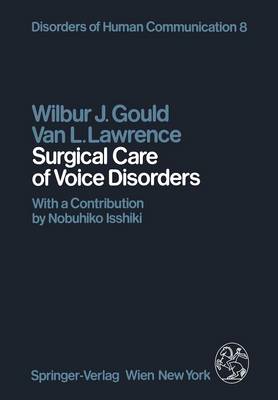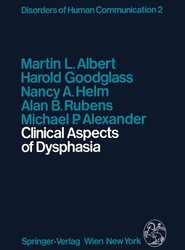(To see other currencies, click on price)
MORE ABOUT THIS BOOK
Main description:
Contemporary laryngology had its beginnings near the close of the 19th century and is probably best exemplified in the work of Morel McKenzie and of Czermak. Subsequent to their pioneering efforts, another surge of interest could be said to have centered about the efforts of the Chevalier Jacksons in the 1920's. After those bold steps, and for almost 40 years, research in laryngology and interest in laryngology continued, but at considerably and increasingly less intense levels, certainly so far as the otolaryngologist population was concerned. In the 1940's Julius Lempert sparked a renaissance in otologic research, deVelopment, and surgery, and exciting new frontiers opened in otology. In our own time, otology remains a large basic and fundamental segment of the otolaryngologic purview, but the flood of new discoveries which followed Lempert, like those which had followed the Jacksons in the 1920's in laryngology, appears to have diminished. When the authors of this publication made acquaintance in the late 1960's, there were approximately 10 centers in the United States for laryngologic research which could be truly designated as voice research facilities. The senior author was at that time instrumental in formulating the major criteria for laboratories to be so designated. In the early 1980's interest in laryngology has revived. At a recent meeting it was possible to list over 40 such laboratories which now were known to the authors over a broad geographic sweep, covering the entire United States.
Contents:
1. Introduction.- 2. Patient Examination: History, Diagnosis, Patient Records.- A. Patient's Medical History.- 1. Discussion.- 2. Occupation.- 3. Environmental Factors.- 4. Considerations of Sex and Age.- 5. Influences of Past History.- 6. Endocrine Influences.- 7. Birth Control Pill.- 8. "Recreational" Drugs.- 9. Emotions.- B. Physical Diagnosis.- 1. General Diagnostic Evaluations.- 2. Vocal Dynamics Testing.- 3. Acoustic Analyses.- 4. Electrolaryngography.- 5. Auditory Evaluation of Hoarseness.- 6. X-Ray Studies.- 7. Tomography.- 8. Computerized Axial Tomography.- 9. Laryngogram.- 10. Xeroradiography.- C. Patient Records.- 3. Patient Examination via the Endolaryngeal Approach: Diagnosis and Therapy.- A. Mirror Laryngoscopy.- B. Fiberoptic Laryngoscopy.- C. Indirect Laryngoscopic Surgery.- 1. Discussion.- 2. Teflon Injection.- D. Direct Laryngoscopy.- 1. Proximal Light Direct Laryngoscopy.- 2. Suspension Laryngoscopy.- 3. Anesthesia.- a) Local Anesthesia.- b) General Anesthesia.- 4. Discussion.- 4. Endoscopie Surgery.- A. Instrumentation for Endoscopic Surgery.- 1. Microlaryngeal Instruments.- B. Cryosurgery.- C. Laser Surgery.- 1. Discussion.- 2. Techniques.- D. Microcautery.- E. Endolaryngeal Surgery: Specific Uses.- 1. Nodes.- 2. Reinke's Space Edema.- 3. Vocal Fold Polyps.- 4. Vocal Fold Cysts.- 5. Ventricular Fold Cysts.- 6. Epiglottic Cysts.- 7. Chronic Laryngitis.- 8. Laryngeal Papilloma.- 9. Laryngeal Webs.- 10. Ventricular Fold Abnormalities.- 11. Vocal Fold Hemorrhage.- 12. Contact and Post-Intubation Granuloma.- 13. Carcinoma in situ.- 14. Benign Lesions, Miscellaneous.- 15. Laryngocoele and Eversion of Ventricle.- 16. Vocal Fold Paralysis.- 5. Phonosurgery: External Laryngeal Surgery Not Requiring Entry into the Vocal Tract.- A. Discussion.- B. General Considerations.- C. Anatomy.- 1. Anterior Commissure.- 2. Vocal Fold.- 3. Thyroid and Cricoid Cartilages.- 4. Arytenoid and Muscular Process of Arytenoid.- D. Surgery for Repositioning of Vocal Fold.- 1. Discussion.- 2. Cartilage Implantation for Vocal Fold Repositioning.- 3. Thyroplasty Type I for Vocal Fold Repositioning.- 4. Arytenoid Adduction or Rotation for Vocal Fold Repositioning.- E. Surgery for Vocal Fold Tension Change.- 1. Theoretical Basis.- 2. Discussion.- 3. Surgical Approximation of Cricoid and Thyroid Cartilages.- 4. Lengthening of Vocal Fold.- 5. Increase in Stiffness of Vocal Fold.- 6. Other Techniques for Increasing Tension of Vocal Fold.- 7. Decreasing Tension of Vocal Fold.- a) Theoretical Basis and Discussion.- b) Thyroplasty Type III: Technique.- c) Sectioning of Superior Laryngeal Nerve or Cricothyroid Muscle.- d) Sectioning of Recurrent Laryngeal Nerve.- e) Nerve-Muscle Transplant.- 6. External Laryngeal Surgery Requiring Entry into the Vocal Tract.- A. Thyrotomy.- B. Lateral Pharyngotomy.- C. Cricoid Split.- D. Special Surgical Procedures.- 1. Lateral Arytenoid Displacement.- 2. Functional Correction of Vocal Fold Paralysis.- a) Nerve-Muscle Pedicle (Tucker) Procedure.- 3. Cricoarytenoid Arthrodesis.- 4. Special Indications for Lateral Pharyngotomy.- 5. Thyroid Surgery.- a) Thyroid Surgery per se.- b) Other Causes Relating to Thyroid Gland.- c) Torticollis.- d) Branchial Cleft Cysts.- 6. Thyroglossal Duct Cysts.- 7. Laryngocele.- 7. Vocal Tract Surgery for Resonance Change (Excluding Hypopharynx and Larynx).- A. Anatomy and Discussion of Parts.- B. Tonsil.- 1. Discussion.- 2. Voice Change After Surgery.- C. Soft Palate.- D. Nasopharynx.- E. Tongue.- 1. Lingual Tonsil.- 2. Lingual Frenulum.- 3. Macroglossia.- 4. Lingual Thyroid.- F. Mandible.- G. Nose.- 1. Nasal Fossae: General Discussion of Role.- 2. Architectural Blockage of Airway.- 3. Nasal Septum: Surgical Technique Considerations.- 4. Architecture of External Nose.- 5. Rhinoplasty.- H. The Paranasal Sinuses.- 8. Conclusions.- References.
PRODUCT DETAILS
Publisher: Springer (Springer Verlag GmbH)
Publication date: January, 2012
Pages: None
Weight: 236g
Availability: Available
Subcategories: Otorhinolaryngology (ENT)
From the same series






